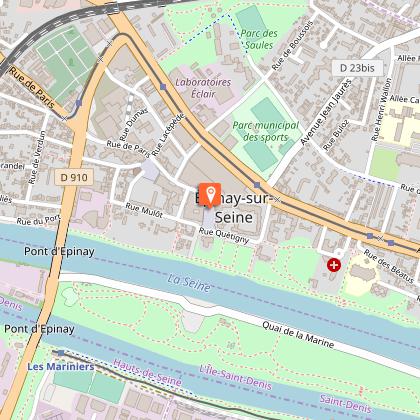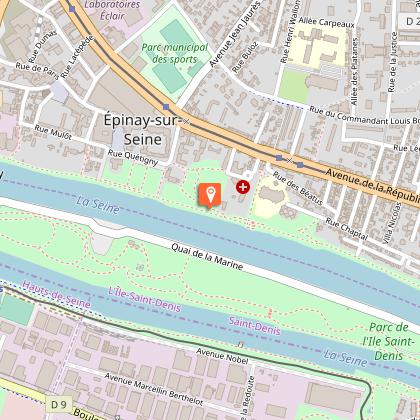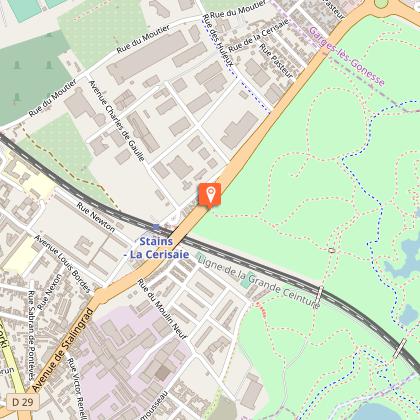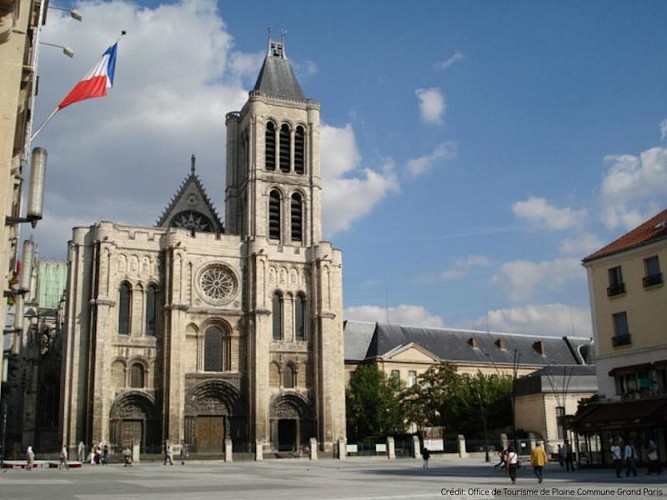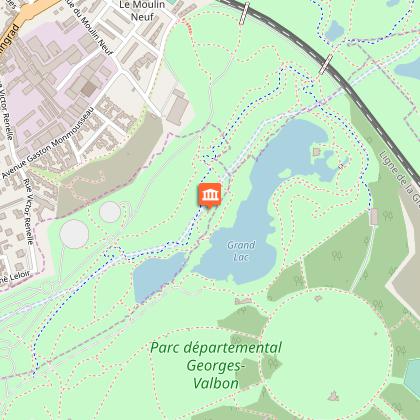Alert
Alerts
Type of practice
Walking
Easy
Presentation
Map
Steps
Points of interest
Cirkwi brief's
Ratings and reviews
See around
2019 Epinay sur Seine 24,000 Steps for 2024



Credit : CDRP 93
The Cirkwi brief
Discover Epinay-sur-Seine: A Historical 24,000-Step Journey
Embark on a remarkable journey through the heart of Epinay-sur-Seine, as we follow the "24,000 Steps for 2024" route, meticulously curated by FFRandonnee Seine-Saint-Denis. This expedition is not just a walk; it's a revelation of history, culture, and natural beauty as we traverse through Epinay, Saint Denis, Stains, and the enchanting Parc Georges-Valbon. Crafted as part of the "Marche en 93" initiative, this itinerary is a celebration of walking and discovery. As you step into this adventure, expect to be carried through time, amidst breath-taking landscapes and monumental landmarks, making every step an encounter with the past and a stride towards the future.
Brief Technical Overview
The journey spans approximately 13.3 kilometers, welcoming participants of varied fitness levels. It kicks off at a modest altitude of 24 meters, peaking at 64 meters, thereby providing a gentle yet stimulating blend of terrains. The total positive elevation change encountered is 49 meters, making it a fairly accessible challenge. The route's engineering is a testament to thoughtful planning, ensuring a comprehensive exploration of the scenic and historic riches of the region. The essence of this itinerary lies in its ability to offer a balanced walking experience, encompassing both natural serenity and architectural marvels.
Seasonal Tips and Recommendations
Regardless of the season, this walking journey offers distinct experiences. In spring and autumn, the pathway is adorned with a vibrant palette of colors, making it ideal for photography enthusiasts. Summer presents a lush, full-blown natural splendor, though walkers are advised to carry water and sunscreen for protection against the sun. Winters, while crisp and clear, require appropriate thermal attire and possibly anti-slip shoes, as the paths can become slippery. Safety is paramount, so regardless of the season, ensure you're well-prepared with suitable gear, and always stay informed about the weather conditions.
The Heart of Seine-Saint-Denis History
Epinay-sur-Seine and its surroundings are not just geographic coordinates; they are vestiges of time, each corner narrating a story. This area, deeply ingrained in the fabric of French history, was a confluence of culture, politics, and ecclesiastical power. The Basilique Saint-Denis, a focal point on our route, is not merely an architectural feat but signifies the evolution of French Gothic architecture and houses centuries of royal history. As you tread through Epinay-sur-Seine and beyond, envision the layers of history underfoot, from the Gallo-Roman era to the crescendo of the Capetian dynasty, making your journey a walk through the annals of time.
Weather Insights and Optimal Visitation Times
The region experiences a temperate climate, with mild to warm summers and cool winters. The most favorable time for this walking journey is between late spring and early autumn, when the weather is principally gentle, and the lush landscapes come to life. July and August offer the warmest conditions, perfect for those who prefer their walks under the sunlit sky. However, to avoid occasional rain showers, late May to June or September to early October present a delightful compromise, with moderate temperatures and lesser precipitation, enhancing the overall experience of the journey.
Embark on a remarkable journey through the heart of Epinay-sur-Seine, as we follow the "24,000 Steps for 2024" route, meticulously curated by FFRandonnee Seine-Saint-Denis. This expedition is not just a walk; it's a revelation of history, culture, and natural beauty as we traverse through Epinay, Saint Denis, Stains, and the enchanting Parc Georges-Valbon. Crafted as part of the "Marche en 93" initiative, this itinerary is a celebration of walking and discovery. As you step into this adventure, expect to be carried through time, amidst breath-taking landscapes and monumental landmarks, making every step an encounter with the past and a stride towards the future.
Brief Technical Overview
The journey spans approximately 13.3 kilometers, welcoming participants of varied fitness levels. It kicks off at a modest altitude of 24 meters, peaking at 64 meters, thereby providing a gentle yet stimulating blend of terrains. The total positive elevation change encountered is 49 meters, making it a fairly accessible challenge. The route's engineering is a testament to thoughtful planning, ensuring a comprehensive exploration of the scenic and historic riches of the region. The essence of this itinerary lies in its ability to offer a balanced walking experience, encompassing both natural serenity and architectural marvels.
Seasonal Tips and Recommendations
Regardless of the season, this walking journey offers distinct experiences. In spring and autumn, the pathway is adorned with a vibrant palette of colors, making it ideal for photography enthusiasts. Summer presents a lush, full-blown natural splendor, though walkers are advised to carry water and sunscreen for protection against the sun. Winters, while crisp and clear, require appropriate thermal attire and possibly anti-slip shoes, as the paths can become slippery. Safety is paramount, so regardless of the season, ensure you're well-prepared with suitable gear, and always stay informed about the weather conditions.
The Heart of Seine-Saint-Denis History
Epinay-sur-Seine and its surroundings are not just geographic coordinates; they are vestiges of time, each corner narrating a story. This area, deeply ingrained in the fabric of French history, was a confluence of culture, politics, and ecclesiastical power. The Basilique Saint-Denis, a focal point on our route, is not merely an architectural feat but signifies the evolution of French Gothic architecture and houses centuries of royal history. As you tread through Epinay-sur-Seine and beyond, envision the layers of history underfoot, from the Gallo-Roman era to the crescendo of the Capetian dynasty, making your journey a walk through the annals of time.
Weather Insights and Optimal Visitation Times
The region experiences a temperate climate, with mild to warm summers and cool winters. The most favorable time for this walking journey is between late spring and early autumn, when the weather is principally gentle, and the lush landscapes come to life. July and August offer the warmest conditions, perfect for those who prefer their walks under the sunlit sky. However, to avoid occasional rain showers, late May to June or September to early October present a delightful compromise, with moderate temperatures and lesser precipitation, enhancing the overall experience of the journey.
Automatically generated.
IGN cards
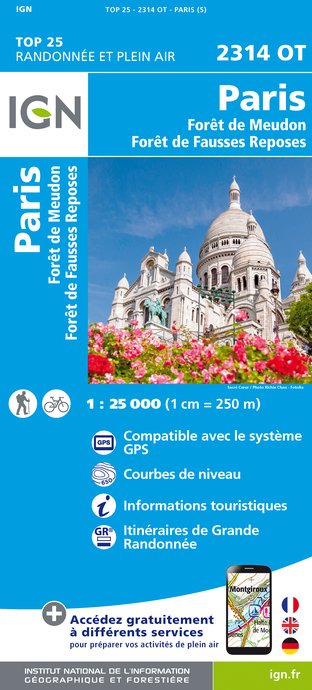
2314OT - PARIS FORÊT DE MEUDON FORÊT DE FAUSSES REPOSES
Editor : IGN
Collection : TOP 25 ET SÉRIE BLEUE
Scale : 1:25 000
13.90€
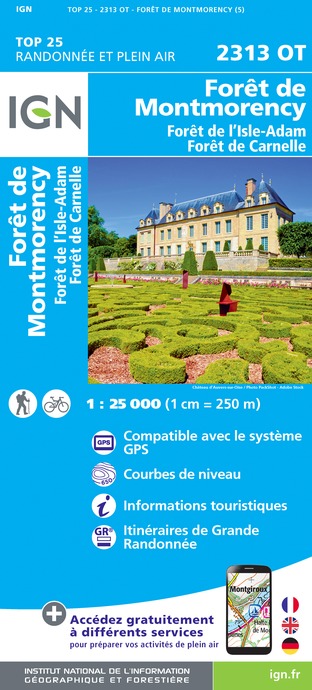
2313OT - FORÊT DE MONTMORENCY FORÊT DE L'ISLE-ADAM FORÊT DE CARNELLE
Editor : IGN
Collection : TOP 25 ET SÉRIE BLEUE
Scale : 1:25 000
13.90€

190 PARIS CHANTILLY FONTAINEBLEAU
Editor : IGN
Collection : TOP 100
Scale : 1:100 000
8.40€
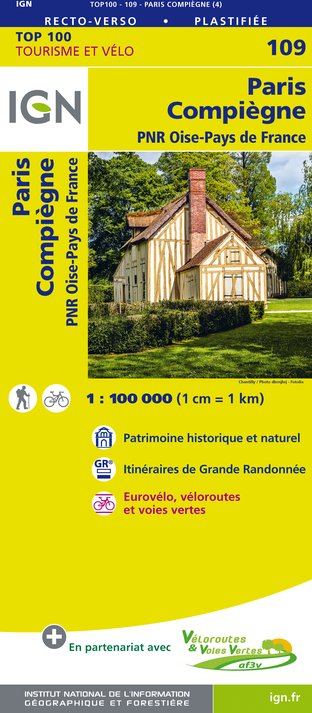
109 PARIS COMPIÈGNE PNR OISE-PAYS DE FRANCE
Editor : IGN
Collection : TOP 100
Scale : 1:100 000
8.40€

108 PARIS ROUEN BEAUVAIS PNR DU VEXIN FRANÇAIS
Editor : IGN
Collection : TOP 100
Scale : 1:100 000
8.40€

D75-95 ÎLE-DE-FRANCE OUEST
Editor : IGN
Collection : CARTES DÉPARTEMENTALES IGN
Scale : 1:150 000
5.90€

D77 SEINE-ET-MARNE
Editor : IGN
Collection : CARTES DÉPARTEMENTALES IGN
Scale : 1:150 000
5.90€

D60-80 OISE SOMME
Editor : IGN
Collection : CARTES DÉPARTEMENTALES IGN
Scale : 1:150 000
5.90€

D28 EURE-ET-LOIR
Editor : IGN
Collection : CARTES DÉPARTEMENTALES IGN
Scale : 1:150 000
5.90€

NR01 HAUTS-DE-FRANCE
Editor : IGN
Collection : CARTES RÉGIONALES IGN
Scale : 1:250 000
6.80€

NR08 CENTRE-VAL DE LOIRE
Editor : IGN
Collection : CARTES RÉGIONALES IGN
Scale : 1:250 000
6.80€

NR03 ÍLE DE FRANCE
Editor : IGN
Collection : CARTES RÉGIONALES IGN
Scale : 1:250 000
6.80€

801 FRANCE NORD OUEST
Editor : IGN
Collection : CARTES NATIONALES IGN
Scale : 1:320 000
6.10€

EUROPE
Editor : IGN
Collection : DÉCOUVERTE DES PAYS DU MONDE IGN
Scale : 1:2 500 000
7.00€
Technical Information
Walking
Difficulty
Easy
Dist.
13 km
Type of practice
Walking
Easy
Show more
Altimetric profile
Starting point
19
Rue de Paris
,
93800
Épinay-sur-Seine
Lat : 48.95244Lng : 2.31349
Steps
Points of interest
Data author

proposed by
CDRP 93
1Ter Place des martyrs de la Résistance et de la Déportation 93110 Rosny-sous-Bois France
Ratings and reviews
To see around
